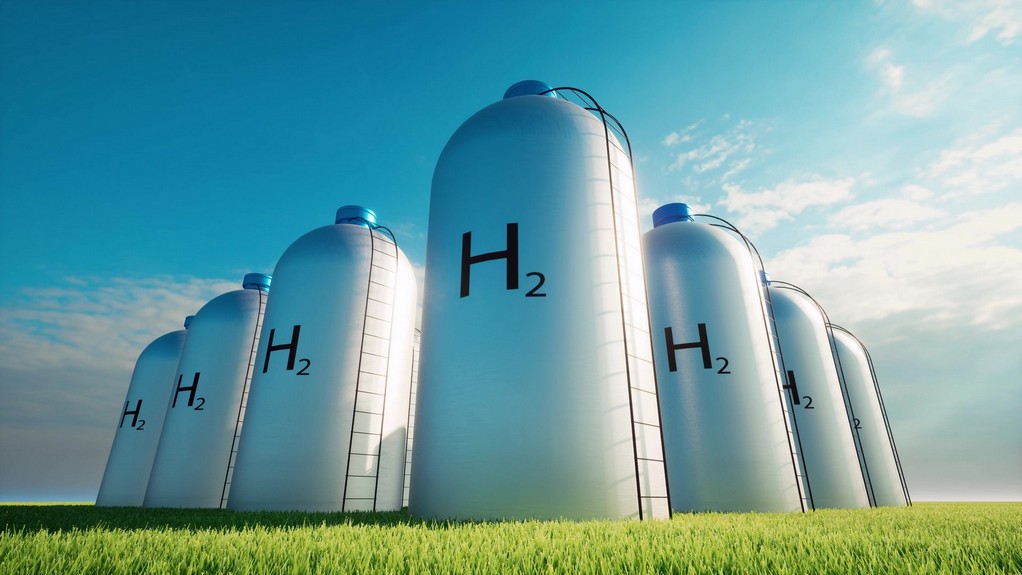The Hanaria, a ship powered by both hydrogen and biodiesel, underwent certification between March 26 and April 4, 2024, an exercise that saw it sailing between Kokura Port in Kitakyūshū and a wind farm located off the city’s Wakamatsu Ward. The vessel successfully completed the 57-kilometer return voyage in three hours and 45 minutes without emitting any carbon dioxide whatsoever.
Developed as part of the Nippon Foundation’s zero-emission shipping project, the Hanaria is 33 meters long and 10 meters wide, weighs 238 tons, and is certified to carry up to 100 people. A “hybrid electric” vessel, the boat is equipped with two hydrogen fuel cells, a generator that runs on biodiesel, and two lithium-ion batteries. The recent voyage represented not only the first successful certification voyage of a Japanese hydrogen-powered vessel weighing 20 tons or more, but also the first zero-emission voyage ever performed by a wind-farm service vessel anywhere in the world.
At a demonstration voyage for guests held in the harbor before the press conference, the Hanaria operated in hybrid mode when departing from the wharf, a part of the journey that is energy-intensive. Even then, the ship was quiet, and passengers felt little vibration. The ship then switched to zero-emission mode, causing the engine to fall silent as the ship accelerated away as if gliding over the water. There was no distinctive smell of marine fuel, something that means that in addition to being good for the environment, the Hanaria also looks set to help passengers feel less seasick.
Japan’s carbon emissions totaled 1.06 billion tons in fiscal 2021, of which a whopping 17.4% were produced by the transport sector: automobiles (including private cars), aviation, and shipping. The Nippon Foundation’s zero-emission shipping project aims to eliminate carbon emissions from coastal shipping, which currently represent 5.5% of all transport emissions. Since 2022, three consortia have been working to develop zero-emission ships. The latest voyage was accomplished by the consortium for the design of hydrogen fuel-cell-powered wind-farm service vessels, which comprises Motena-Sea, MOL Techno-Trade, Hongawara Ship Yard, Kanmon-Kisen, and Taiyō Nippon Sanso.
Commenting on the success of the voyage, Nippon Foundation Executive Director Unno Mitsuyuki said, “Zero-emission shipping is a key part of creating a carbon-neutral society by 2050. Japan has more hydrogen patents than any other country in the world. We hope to pool this technical expertise and use it to lead the global shipping industry to carbon neutrality.”
Fuel cell and hydrogen storage technology for the project was provided by Toyota, which is the producer of the Mirai, the world’s first mass-produced fuel cell vehicle, as well as the owner of many hydrogen-related patents.
The Hanaria will begin its working life by ferrying passengers between Kokura and Moji Ports. The vessel will be deployed on a cruise that takes passengers under the Kanmon Bridge before giving them views of the city of Shimonoseki, Ganryū Island, and Karato Market, as well as a cruise that allows passengers to visit temples and shrines by sea, and a nighttime cruise for those who want to see the lights of factories in operation. Fares range from ¥5,500 to ¥11,000.
Tags: Biodiesel, Hanaria Vessel, Hydrogen, Japan



Recent Posts
Port of Brisbane Unveils Vision 2060 to Drive Smarter, Cleaner, and More Connected Future
Wärtsilä to Deliver Hybrid Propulsion Systems for Vertom Group’s New Low-Emission Vessels
Latvian port receives electric Konecranes Gottwald Mobile Harbor Crane
Sustainable Ocean Economy Vital for Human Development, Says UNDP at UN Ocean Conference
Green Hydrogen Costs in India Could Drop by 40%, Says IEEFA-JMK Report
Cavotec Secures €1.55 Million Shore Power Contract for Port of Antwerp-Bruges
APM Terminals and SANY Marine sign landmark agreement to accelerate decarbonisation
The Port of Gothenburg takes big step towards shore power connection for container and car/RoRo vessels